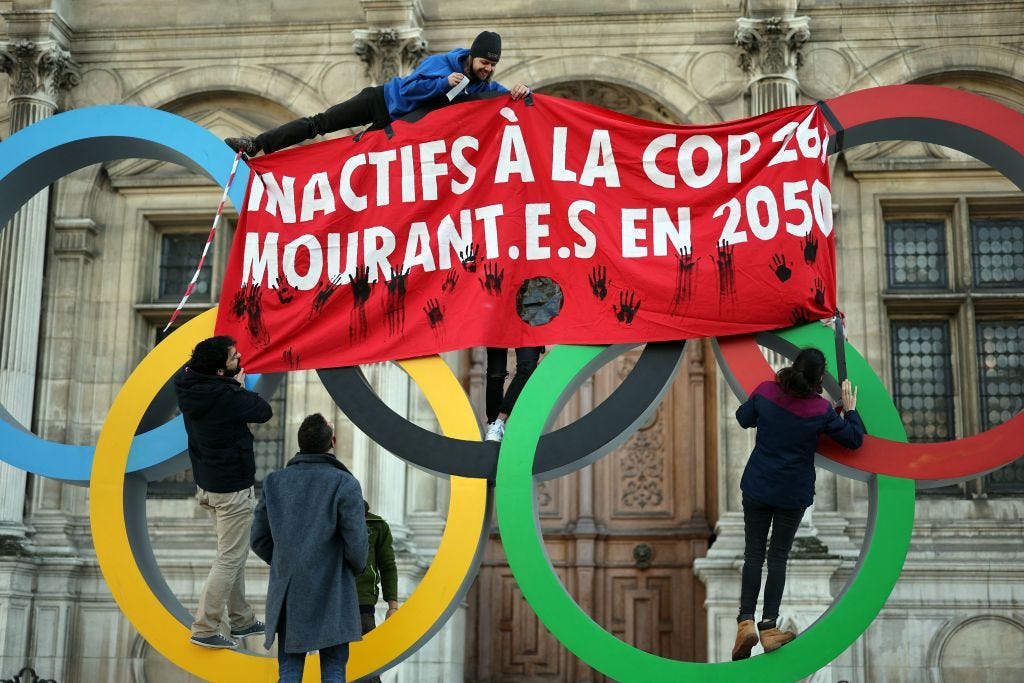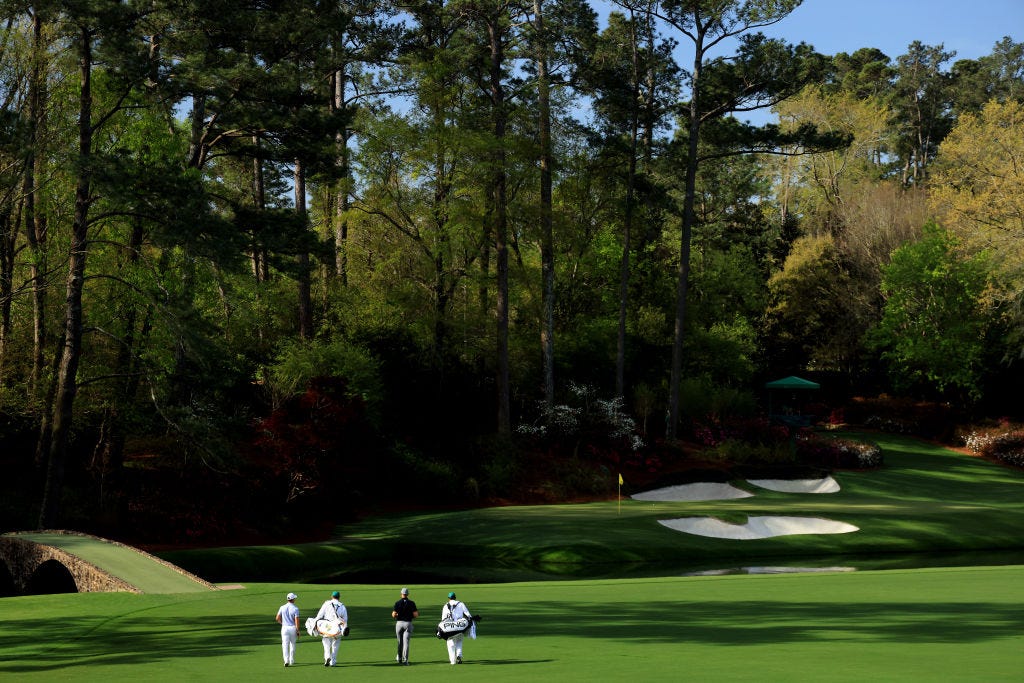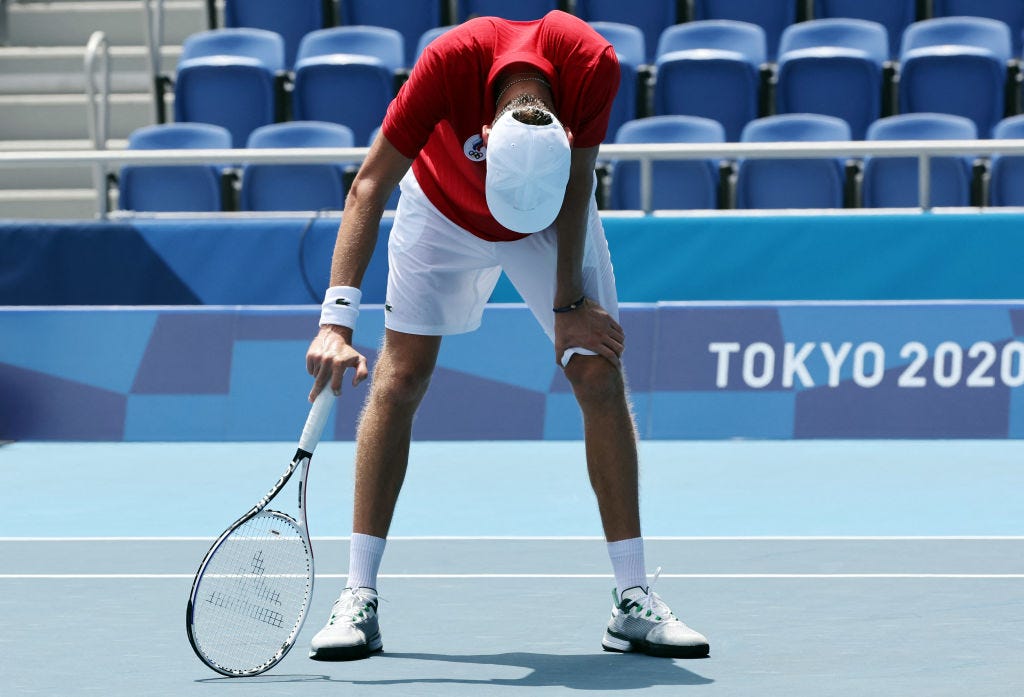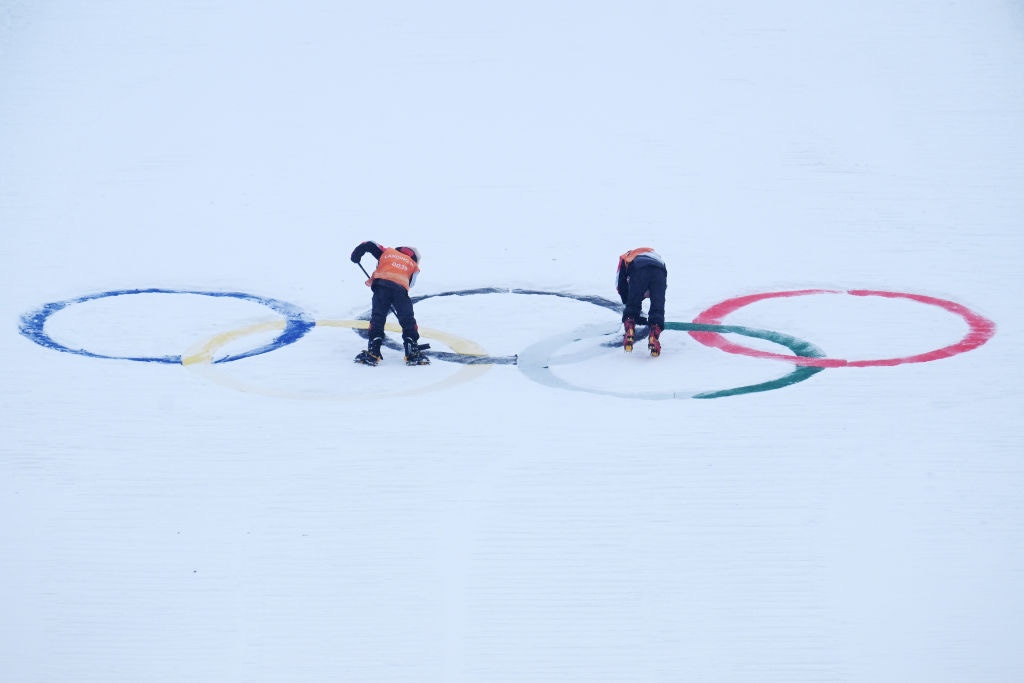Global Sport Matters: The Sustainability of Sport Issue (Part I)
Why the climate crisis is a sports crisis, how golf can become more sustainable, how heat and air pollution threaten mega-events and exacerbate inequality, and how COVID-19 helped sports cut CO2.
Welcome to Hreal Sports, a newsletter written by Patrick Hruby about sports things that don’t stick to sports. Sign up and tell your friends!
Hello, hello, hello! Apologies for ghosting your inbox last month: I was dealing with a family illness, and some things had to give.
That said, I’m thrilled to share the first batch of stories for the April issue of Global Sport Matters, the digital publication of the Global Sport Institute at Arizona State University. For those of you who are unfamiliar with our work, we cover a wide range of outside the lines, sports and society topics though original research and reporting, and via podcasts, live events, standalone articles, and monthly themed issues.
April is all about the Sustainability of Sports. Maybe you’ve heard: thanks to humanity’s habit of pumping carbon dioxide and other greenhouse gasses into the Earth’s atmosphere, the Planet Is Getting Too Damn Hot. So how is climate change already impacting sports across the globe? What will our even-warmer future look like? What role can sports play in reducing carbon emissions (and other forms of pollution) in order to prevent worst-case warming scenarios from becoming reality?
Our issue is devoted to answers. Links and summaries are below for stories on why the climate crisis is a sports crisis, how golf can become more sustainable, how heat and air pollution threaten mega-events and exacerbate inequality, and how COVID-19 helped sports cut CO2. Hope you enjoy—and stay tuned for Part II!
“Time Out: To Save Itself, Sport Must Join the Fight Against Climate Change,” by David Goldblatt.
From vanishing snow at ski venues to searing, sickness-inducing heat at tennis and marathon tournaments, sports are already facing serious challenges and threats due to climate change—and they can expect bigger problems in the future. Moreover, sports likely account for roughly 0.8 percent of annual worldwide carbon emissions, about as much as Poland or Spain. This means sports are part of the climate problem, and can be part of the solution.
In the United Kingdom, coastal golf courses are especially prone to the threat of flooding. Scotland’s Montrose Golf Links – one of the five oldest courses in the world and a place where records of the game date to 1592 – has been forced to sacrifice its third tee to provide sufficient rock defenses for the even more threatened first and second holes. It expects to lose more in the near future. The Royal North Devon Golf Club, entirely flooded by Storm Deirdre in 2018, has seen its eighth hole disappear into a shingle beach. Six of the 10 courses in rotation for the British Open, including St. Andrews, Troon, and Carnoustie, are unlikely to last into the 22nd century.
The islands and archipelagos of the South Pacific are among the areas most threatened by rising sea levels, and their rich rugby cultures, nurtured on their beaches, are equally in jeopardy. California’s beaches and their surfing culture also look insecure, as sea level rises and big, surfable swells fall victim to new tidal and wind patterns. One recent study predicted that 18 percent of the state’s most popular breaks for surfing will be lost by 2050 and another 16 percent will be in decline. The study also predicted that two thirds of all beaches in the southern half of California will be gone by the end of the century, lost to the rising sea level and extreme weather events that will cause current surfing breaks to become unreliable or to disappear altogether.
Carlisle United, a lower-level football team in the north of England, saw its stadium submerged for seven weeks in 2015 after massive rain storms. Like the 2014 Australian Open, this could be a sign of things to come: By 2050, about a quarter of England’s professional football grounds will be threatened by major annual flooding or actually underwater. A similar fate awaits arenas in New York City and Jacksonville, Florida. Across East and Southeast Asia, dozens of facilities are under threat – and in the case of Jakarta’s brand-new national football stadium, the most likely outcome is that it will be submerged by 2050.
“Can Golf Transform From an Elitist Hobby to a Public Good?” by Alex Kirshner.
The golf industry uses tons of land and water and injects damaging chemicals into the environment—but golf courses also have the potential be a place for recreation and natural beauty in a community. So how can the sport get there from here?
As Earth responds to a changing climate, golf faces some fundamental challenges right off the first tee. A typical golf course takes up a lot of land, 150 acres or so. It uses a lot of water, about 312,000 gallons per day. Its care relies heavily on the use of nutrients, chemicals, and pesticides that can be harmful to the surrounding environment.
Then there’s the question of who actually benefits from all of the above – and who doesn’t. In a given day, only a few hundred people might use a course: 18 holes, no more than four players at a time per hole, all cycling through the course during daylight hours, plus practice areas like a driving range or putting green. Some elite courses cost hundreds of dollars to play. Others – around 25 percent of American courses – aren’t open to the public in the first place.
Add it up, and it’s easy to imagine a future in which golf becomes increasingly unjustifiable – a sport with environmental costs that far outweigh its social benefits, especially as the world struggles to cope with climate change, environmental degradation, and socioeconomic inequality. However, professionals who work at the crossroads of golf and environmentalism see another way forward: one in which the sport becomes greener and more inclusive, with environmental and economic sustainability working hand in hand.
In fact, some of those professionals say, efforts to remake the sport along these lines already are well underway. For golf, there’s a lot on the line.
“The Pandemic Blueprint For Sport to Cut Back On Carbon Emissions,” by Seth Wynes.
Air travel is one of the worst culprits for carbon emissions on Earth, and few industries rely on constant air travel quite like sport. During the COVID-19 pandemic, however, sports leagues showed a blueprint for what reduced travel and shorter seasons could look like—and the results were stark.
If any of the big four leagues decided that it wanted to quickly reduce its carbon footprint in a substantial way, however, there’s low-hanging fruit that is ready to be picked: reducing air travel, which generates significant carbon dioxide emissions that trap heat within Earth’s atmosphere.
This is not a theoretical proposition. It’s completely doable. In fact, it already has been done. In response to the coronavirus pandemic, the National Basketball Association, National Football League, National Hockey League, and Major League Baseball made changes to their schedules in 2020 to keep players and staff safe. These changes ranged from shortening seasons to canceling international games.
Critically, these changes meant less flying – and with that, fewer emissions. In a paper published last year in the journal Environmental Science and Technology, I took a deep dive into the effects of these shifts, finding that if the four leagues maintained their pandemic scheduling changes, the changes would cut their overall carbon footprint from air travel when compared to a normal year by 22 percent.
“Extreme Heat and Air Pollution Create an Uneven and Risky Playing Field,” by Jennifer Vanos.
Increasing temperatures and unequal pollution exposures don’t just impact today’s elite athletes—they also increase disparities and affect participation in youth sport, which in turn affects both who gets to enjoy sport today and who will become the elite athletes of tomorrow.
While elite-level events highlight acute environmental impacts on performance, the long-term consequences of extreme heat and air pollution have a disproportionate impact on those less able to cope with such exposures. Healthy and safe outdoor spaces are crucial in lifelong athlete development. Sport shines a global spotlight on these uneven burdens in outdoor sporting activities at every level, where environmental injustices and racism widen the gap in access to clean air and manageable temperatures.
As we strive for equity in historically disadvantaged populations, we must face a hard truth: Many youth athletes exercise in dirty air and dangerously hot environments because of where they live and go to school, thus inhibiting or even preventing safe participation and future athletic success. Those who reach elite levels are often forced to put themselves at risk in competition and struggle through dangerous heat. Understanding how heat and pollution affect the body – and why – is essential to support more equitable and safe participation moving forward.
“Hot, Costly, and Dangerous: Climate Change and the Future of Sports Mega Events,” by Walker Ross.
Extreme weather and a changing environment are already creeping up on athletes and their fields of play. But in the short-term, sports mega events such as the Olympics and World Cup will feel the effects of rising temperatures most.
Last year, my colleague Dr. Madeleine Orr of the University of Loughborough London and I published a study predicting the impact of climate change on the Olympics and the Men’s World Cup over the next decade. Using historical climate data and recent United Nations reports on climate change, we made climate projections for each known future host city for both events. Next, we compared those projections to acceptable conditions for sports.
Across all of the cities and events, we saw common – and frightening – trends. The Summer and Winter Games in Paris (2024), Milan-Cortina (2026), and Los Angeles (2028) are likely to have heat conditions unsuitable for competition and air quality that’s poor as well. So are the World Cups in Qatar (this November and December) and the multinational North American bid (2026). Only the 2032 Olympics in Brisbane are on track to be free of climate concerns; however, they are so far into the future that it’s highly possible conditions may change.
When heat is involved, two risks are paramount: summer sporting events where temperatures are too hot for athletes to compete and fans to watch safely, and winter events where temperatures are too warm for snow. Already, this year’s World Cup in Qatar will be held in the Northern Hemisphere’s winter – a historical first – in order to mitigate extreme heat. As mentioned above, the Beijing Winter Games took place almost entirely on artificial snow. It’s possible that in the future, such drastic-seeming measures will be the norm.
This has been Hreal Sports, a newsletter written by Patrick Hruby about sports things that don’t stick to sports. If you have any questions or feedback, contact me at my website, www.patrickhruby.net. And if you enjoyed this, please sign up and share with your friends.









